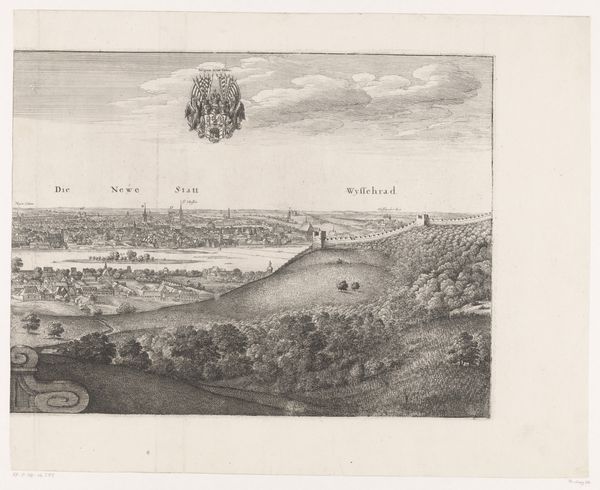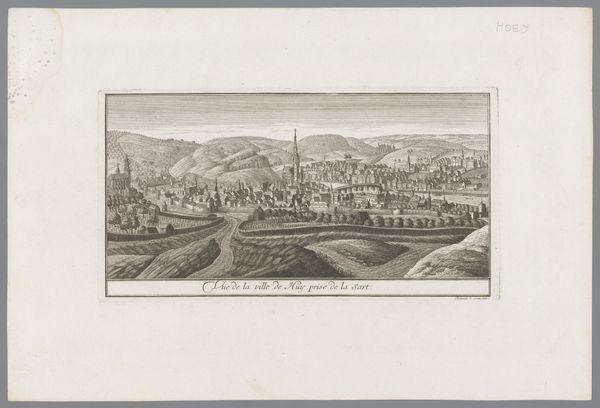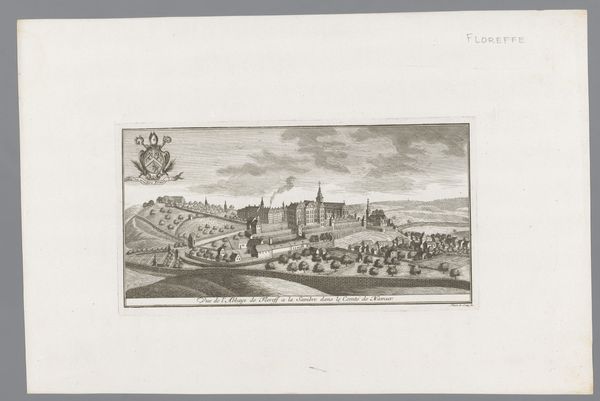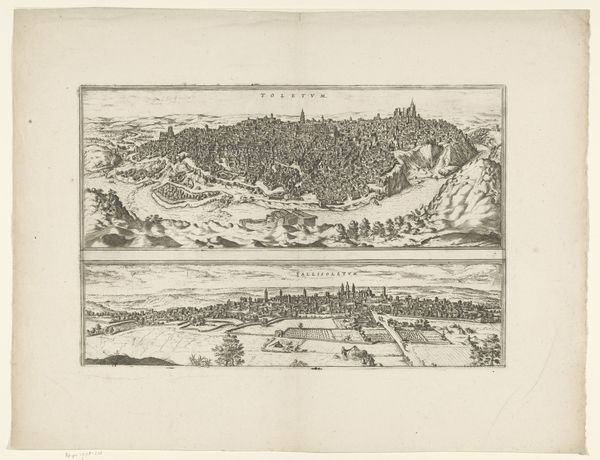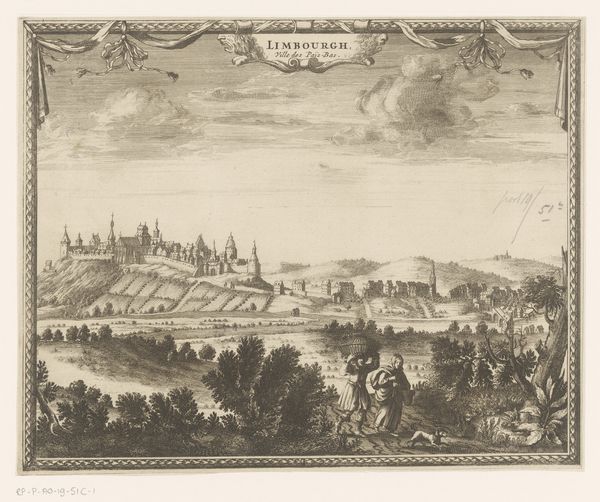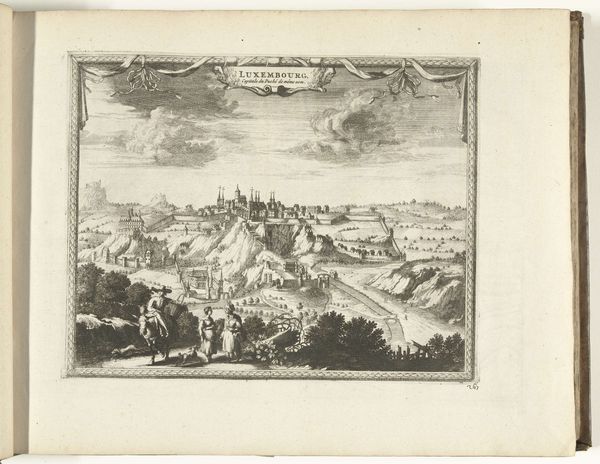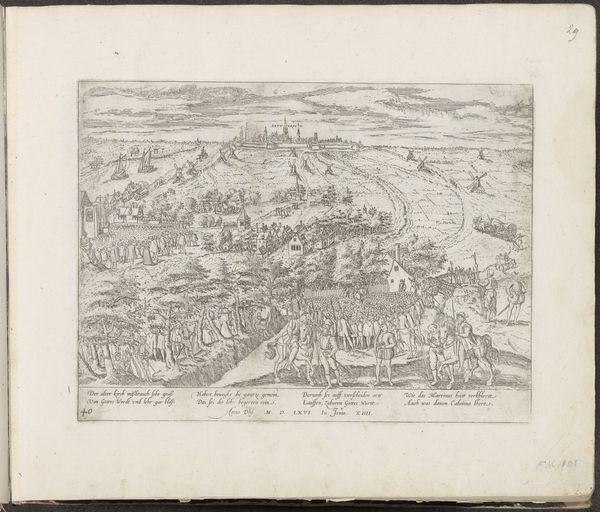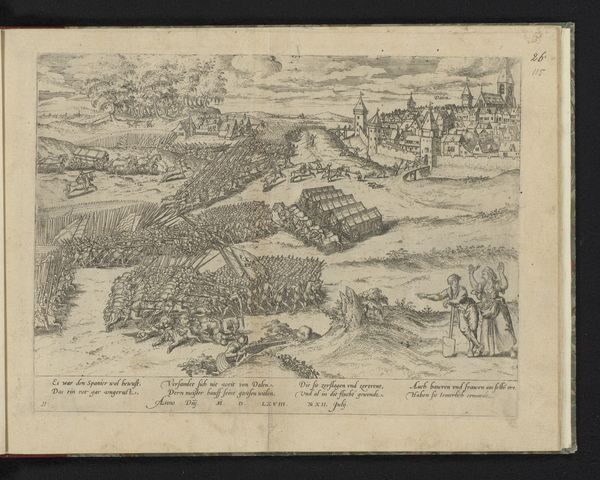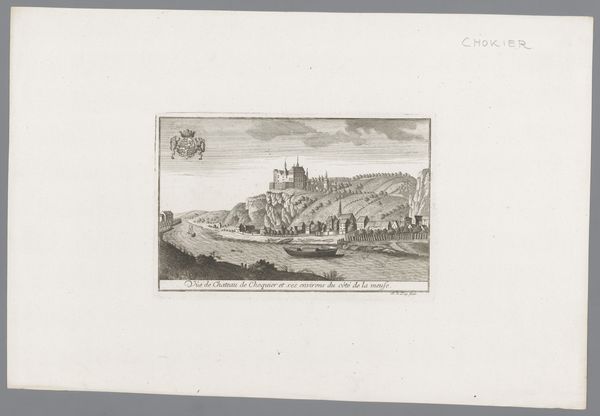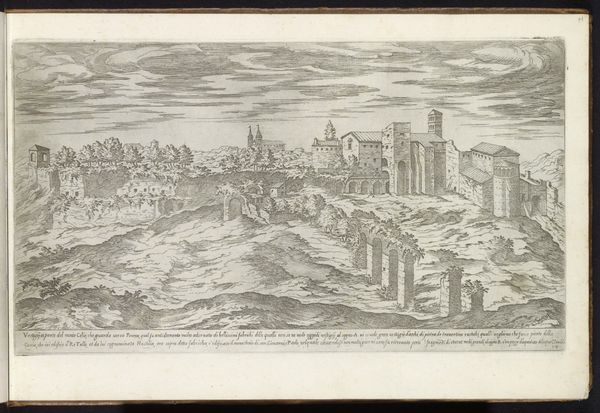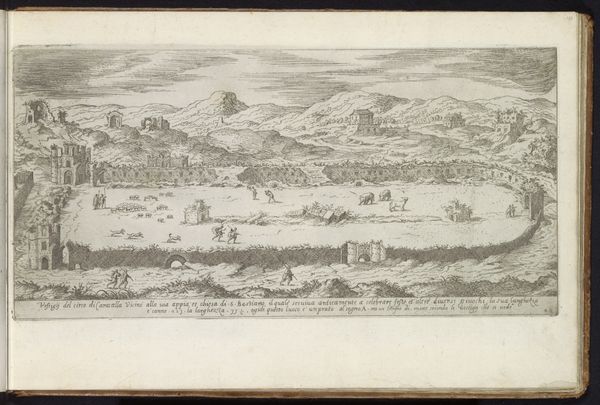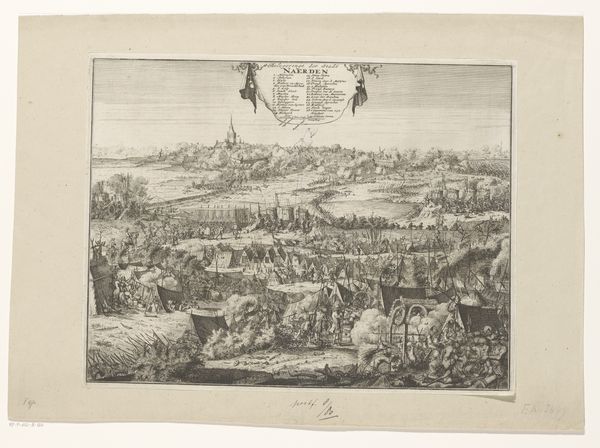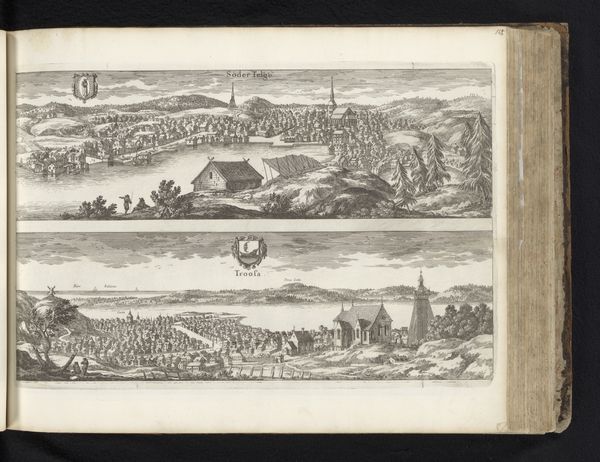
print, engraving
#
baroque
# print
#
landscape
#
perspective
#
cityscape
#
engraving
Dimensions: height 171 mm, width 328 mm
Copyright: Rijks Museum: Open Domain
Curator: What a strikingly serene composition. We’re looking at an engraving entitled "Gezicht op Dinant vanaf de overkant van de Maas," or "View of Dinant from across the Meuse River." It was created between 1738 and 1744 by an anonymous artist. The perspective almost feels staged. Editor: My eyes are drawn immediately to the citadel perched above the town – it's quite the dominant symbol. You almost sense the constant watchfulness and power radiating from it, an ever-present reminder of secular authority overlooking the everyday life of Dinant. Curator: Right. The medium, engraving, is significant. Consider the labor involved. Each line carefully etched into the plate by hand, a repetitive, almost meditative process that reflects the slow, steady economic life of a town like Dinant at this time. Also, notice the mass production facilitated by printmaking which made the image accessible to a broader consumer base, extending its reach beyond an exclusive elite. Editor: The landscape itself is so carefully constructed with all the visual metaphors of baroque art, like, for example, a stage setting. The river cuts through the landscape dividing foreground and background but uniting everything simultaneously as the source of nourishment for the populace. Water representing not only life but the passage of time and change. Even the trees, grouped and carefully positioned, symbolize strength, endurance, or specific families. Curator: Interesting connections. For me, it also comes back to material reality and consumption. How many prints of Dinant were produced and sold? Who could afford them? Where were they displayed? These material facts shape the reception of the image and its cultural impact beyond simple symbolism. Editor: Certainly. Yet I can’t help but see this vista as an attempt to fix a particular cultural moment. It's presenting the town as timeless but its meaning certainly evolved based on historical developments such as military actions, religious practices and so forth. These readings inform how it can speak to a modern audience today. Curator: Yes, a reminder of how even seemingly objective landscapes can reflect prevailing economic structures and the possibilities afforded to particular producers and consumers during the eighteenth century. Editor: Exactly, by looking beneath the surface and finding that perfect symbolic nexus point we unlock layers of continuity across different centuries of interpreting meaning through artistic vision!
Comments
No comments
Be the first to comment and join the conversation on the ultimate creative platform.
